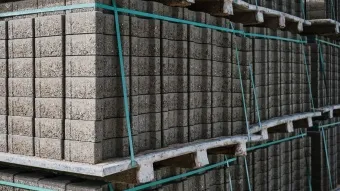The Purchasing Managers' Index (PMI) in Israel continues to indicate expansion for the second consecutive month, although the expansion's momentum has slowed down this month. The value measured this month stands at 50.2%, compared to a value of 51.5% measured last month (seasonally adjusted data), a decrease of 1.3%.
The PMI Center, Mr. Eli Zimels, notes that this month the manufacturing output component changed direction and after one month of expansion, it returned to contraction and joined the foreign demand component, which continues to contract. The local demand component and the employment component continue to be in an expansion trend this month. This month, the raw material prices component also continues to be in an expansion trend. This month, two supply time components continue to contract. In addition, the PMI Center notes that unlike the Israeli manufacturing economy, which is expanding, the index in the US returned to contraction this month and joins the English index, which has been in a contraction trend for six consecutive months.
In the manufacturing output component, a change of direction occurred again this month and after only one month of expansion, this component returned and crossed the 50% line separating contraction from expansion and moved to contraction. The value measured this month stands at 49.3%, compared to a value of 50.3% measured last month, a decrease of 1.0% compared to last month. The respondents to the survey attribute the change of direction and the transition to contraction in this component to a variety of reasons, the main ones being seasonality, production problems, and a shortage of raw materials.
The local orders component continues for the fifth consecutive month to be in an expansion trend, although this month a slowdown in the expansion's momentum was observed. The value measured this month stands at 52.4%, compared to a value of 55.2% measured last month, a decrease of 2.8% compared to last month. The respondents to the survey attribute the continuation of the expansion in this component to a variety of reasons, the main ones being the level of demand, efficiency, and seasonality.
The quantity of purchases for inventory component continues for the second consecutive month to be in an expansion trend, although this month a significant slowdown in the expansion's momentum was observed in this component. The value measured this month stands at 55.5%, compared to a value of 58.9% measured last month, a decrease of 3.4% compared to last month. The respondents to the survey attribute the continuation of the expansion in this component to the level of demand, seasonality, and a change in the inventory policy of the firms.
The raw material prices component continues for the fifty-sixth consecutive month to be in an expansion trend, although this month a slight slowdown in the expansion's momentum was observed. The value measured this month stands at 61.5%, compared to a value of 63.5% measured last month, a decrease of 2.0% compared to last month. The meaning of the price component continuing to be in an expansion trend is that a continuation of the increase in raw material prices was observed. The main reasons for the continuation of the expansion in this component are attributed by the respondents to the survey to the continued rise in raw material prices, a shortage of some raw materials, and changes in exchange rates.
The supply time component in the local market continues for the twenty-first consecutive month to be in a contraction trend, although this month a further slowdown in the trend's momentum was observed in this component. The value measured this month stands at 47.5%, compared to a value of 46.3% measured last month, a slight increase of 1.2% compared to the value measured last month. The meaning of the supply time component being in contraction is that there is an extension in supply times.
The supply time component from abroad continues for the sixty-ninth consecutive month to be in a contraction trend, and this month even an intensification in the contraction's momentum was observed in this component. The value measured this month stands at 36.5%, compared to a value of 39.3% measured last month, a decrease of 2.8% compared to last month. The meaning of the supply time component from abroad continuing to contract is that the extension in supply times from abroad continues.
The raw material inventory levels component continues for the fourth consecutive month to be in a contraction trend, and this month even an intensification in the contraction's momentum was observed in this component. The value measured in this component this month stands at 48.1%, compared to a value of 49.6% measured last month, a slight decrease of 1.5% compared to the value measured last month. The respondents to the survey attribute the continuation of the contraction in this component to the level of demand and seasonality.
The finished product inventory component continues for the fourth consecutive month to be in an expansion trend, although this month a significant slowdown in the expansion's momentum was observed in this component. The value measured in this component this month stands at 56.1%, compared to a value of 59.9% measured last month, a decrease of 3.8% compared to the value measured last month. The respondents to the survey attribute the continuation of the expansion in this component to the level of demand, the inventory policy of the firms, and seasonality.
The employment component continues for the third consecutive month to be in an expansion trend, although this month a slight slowdown in the expansion's momentum was observed. The value measured this month stands at 53.1%, compared to a value of 54.1% measured last month, a decrease of 1.0% compared to the value measured last month. The respondents to the survey attribute the continuation of the expansion in this component to the increase in the production capacity of the factories, seasonality, and the level of demand.
The foreign demand component continues for the seventh consecutive month to be in a contraction trend, although this month a further slowdown in the contraction's momentum was observed in this component. The value measured this month stands at 48.5%, compared to a value of 47.4% measured last month, a slight increase of 1.1% compared to the value measured last month. The respondents to the survey attribute the continuation of the contraction in this component to the level of demand from abroad.
Manufacturing Expansion Slows Down in March, Yet Continues
Israel's manufacturing sector continues to expand in March, according to the Purchasing Managers' Index, despite a slight slowdown in the rate of expansion.
12:09 ,09.04.2025
-
Found it useful? Share
-
Share on Facebook
-
Share on X
-
Share on LinkedIn
-
Share via Email
-
Share on WhatsApp
-
Print Article



